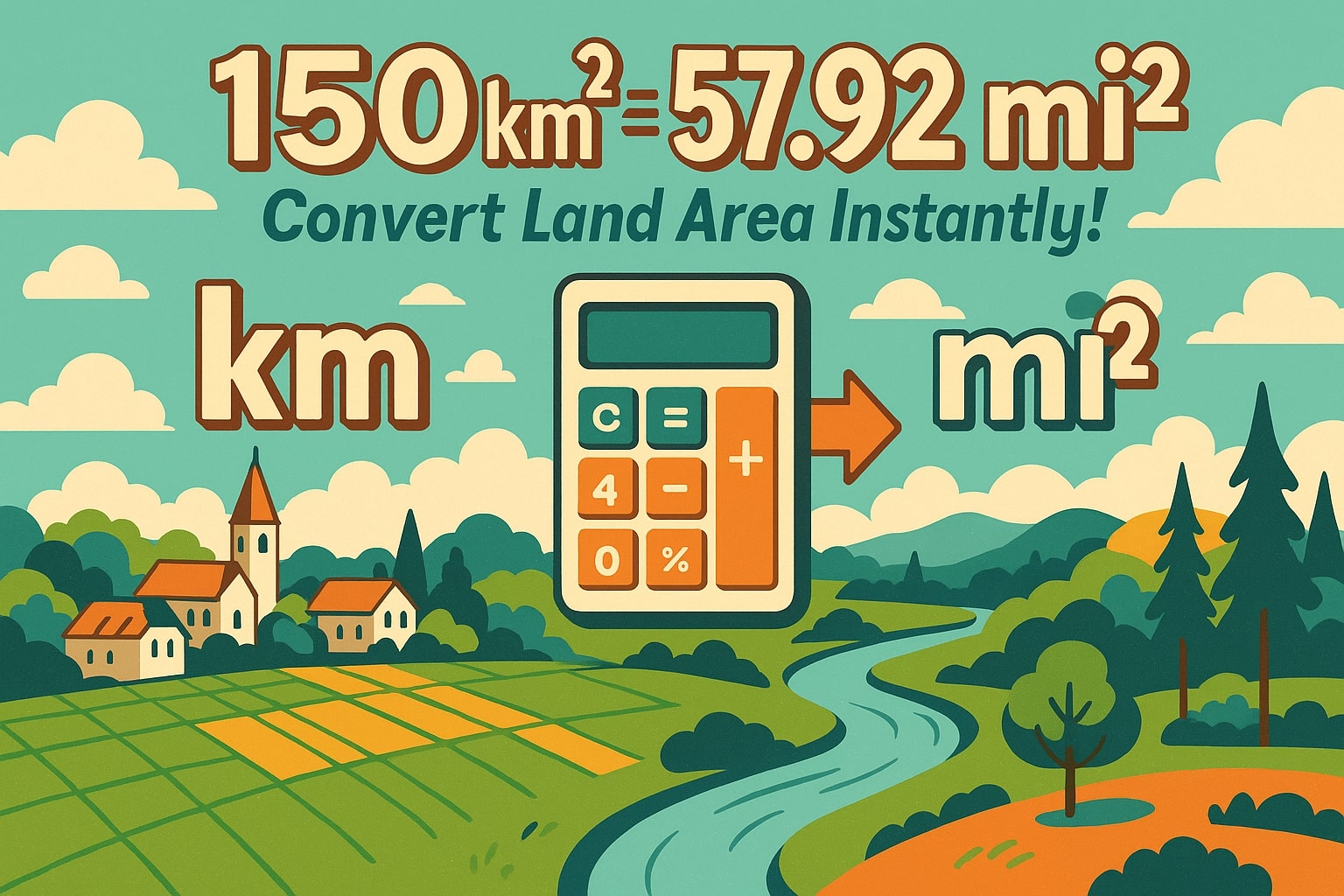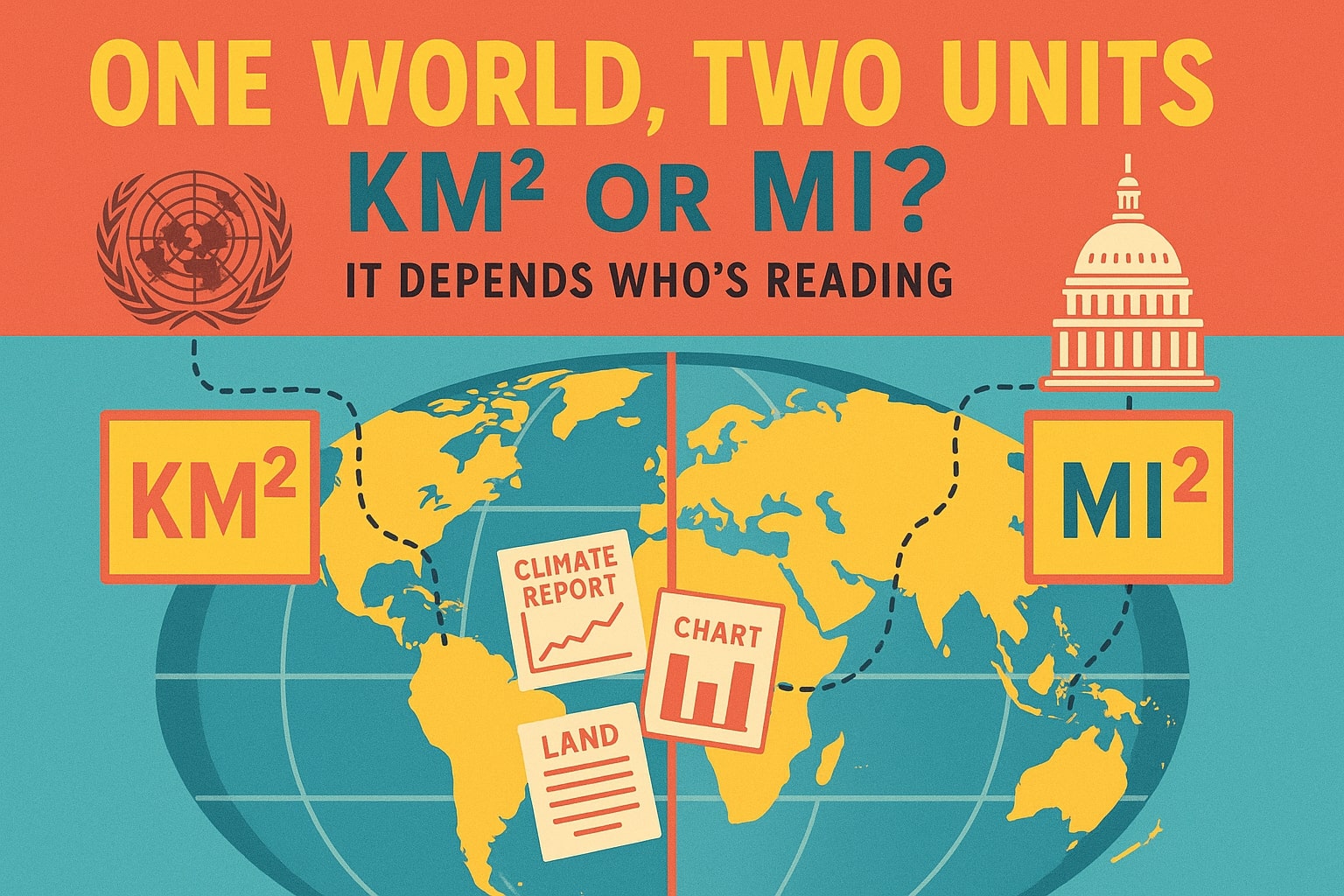square kilometer to square mile – How to convert km² to mi²
When comparing land areas between countries that use different measurement systems, square kilometers and square miles come up a lot. Square kilometers are the standard in most of the world, while square miles are still used in the United States and some parts of the UK. Whether you're reading a land survey or working with a geographic database, knowing how to convert km² to mi² is a must.

Here’s the conversion breakdown:
1 square kilometer = 0.386102 square miles
That means to switch from square kilometers to square miles, you multiply by that factor.
Formula:
square mile = square kilometer × 0.386102
Example:
You’re analyzing a national park that covers 150 km². To convert that:
square mile = 150 × 0.386102 = 57.9153 mi²
So, a 150 km² park would be approximately 57.92 square miles — a number that fits better in U.S. land planning documents or federal reports.
To run this calculation instantly, try our Area Converter or explore more with Conversion tools.
Did you know?
-
1 square mile equals about 2.59 km², so land areas in the U.S. tend to appear smaller numerically than in metric reports.
-
The country of Singapore covers about 728.6 km², which equals roughly 281.3 mi².
-
State parks and wildlife areas in the U.S. often reference square miles for legal boundaries and conservation zoning.
-
United Nations data for global land use usually starts in square kilometers but often provides square mile equivalents for international readers.
-
In sports field planning, large complexes — like golf courses or Olympic villages — may list area in both km² and mi² depending on the audience.
From UN maps to U.S. borders: why both units still matter
Many global organizations report land areas in square kilometers by default — it’s clean, metric, and consistent across borders. But when those reports are used in U.S. policy, infrastructure, or environmental assessments, the data often needs to be restated in square miles. That’s especially true for government agencies, energy companies, or research institutions publishing findings in both systems.
Take climate impact reports. An agency may show that forest loss totals 65,000 km² — but to make it accessible to a North American audience, they’ll also say that’s 25,000 square miles. It’s not just preference — it’s about communication clarity.
The same applies to real estate investments, mining claims, or large-scale agriculture. Global projects often bridge both units to keep reporting aligned across multiple regulatory systems.

From metric maps to imperial insight
When your work crosses borders or your audience spans continents, using the right area unit matters. The conversion is simple:
square mile = square kilometer × 0.386102
It gives you a fast, reliable way to translate metric measurements into something familiar for readers in the U.S. and other imperial-using regions. And when you’re working on reports, land valuations, or zoning plans, this single step keeps everyone on the same page — no matter where that page is printed.
For quick results, try the Area Converter or browse more handy tools with Conversion tools.

